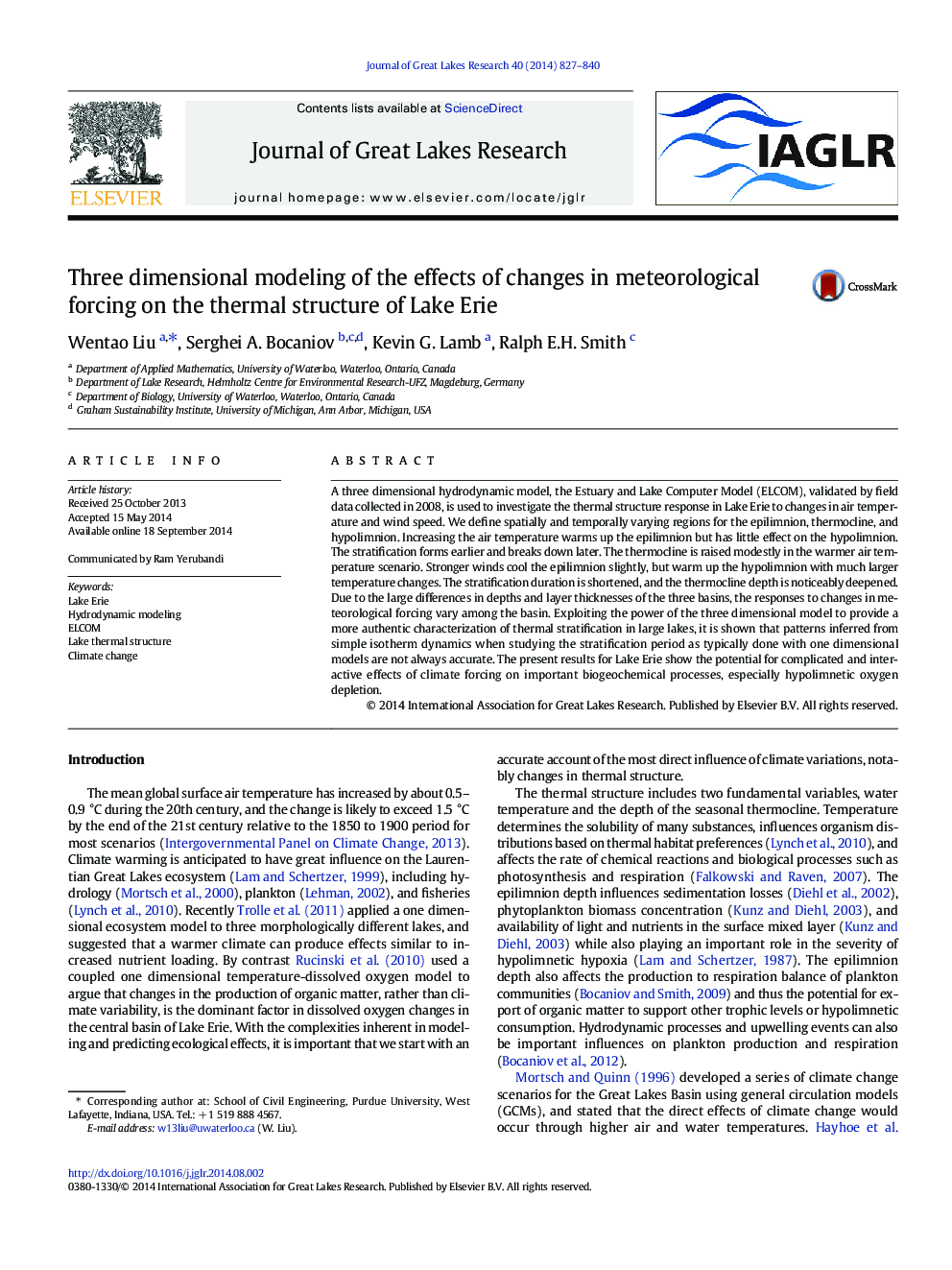| Article ID | Journal | Published Year | Pages | File Type |
|---|---|---|---|---|
| 6305064 | Journal of Great Lakes Research | 2014 | 14 Pages |
Abstract
A three dimensional hydrodynamic model, the Estuary and Lake Computer Model (ELCOM), validated by field data collected in 2008, is used to investigate the thermal structure response in Lake Erie to changes in air temperature and wind speed. We define spatially and temporally varying regions for the epilimnion, thermocline, and hypolimnion. Increasing the air temperature warms up the epilimnion but has little effect on the hypolimnion. The stratification forms earlier and breaks down later. The thermocline is raised modestly in the warmer air temperature scenario. Stronger winds cool the epilimnion slightly, but warm up the hypolimnion with much larger temperature changes. The stratification duration is shortened, and the thermocline depth is noticeably deepened. Due to the large differences in depths and layer thicknesses of the three basins, the responses to changes in meteorological forcing vary among the basin. Exploiting the power of the three dimensional model to provide a more authentic characterization of thermal stratification in large lakes, it is shown that patterns inferred from simple isotherm dynamics when studying the stratification period as typically done with one dimensional models are not always accurate. The present results for Lake Erie show the potential for complicated and interactive effects of climate forcing on important biogeochemical processes, especially hypolimnetic oxygen depletion.
Related Topics
Physical Sciences and Engineering
Earth and Planetary Sciences
Earth and Planetary Sciences (General)
Authors
Wentao Liu, Serghei A. Bocaniov, Kevin G. Lamb, Ralph E.H. Smith,
